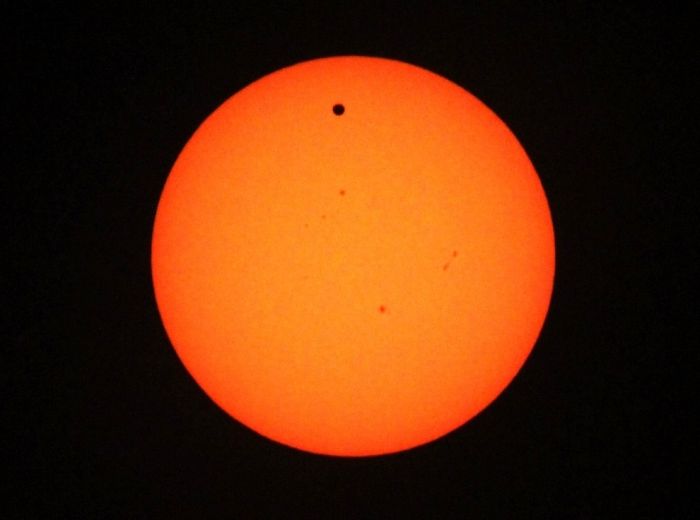|
|
Transit Of Venus Across The Sun
|
Modern observations
Aside from its rarity, the original scientific interest in observing a transit of Venus was that it could be used to determine the distance from the Earth to the Sun, and from this the size of the Solar System, by employing the parallax method and Kepler's third law. The technique involved making precise observations of the different durations of the transit when viewed from widely separated points on the Earth's surface. The distance between the points on the Earth was then used as a baseline to calculate the distance to Venus and the Sun via triangulation.
Although by the 17th century astronomers could calculate each planet's relative distance from the Sun in terms of the distance of the Earth from the Sun (an astronomical unit), an accurate absolute value of this distance had not been determined.
In 1627, Johannes Kepler became the first person to predict a transit of Venus, by predicting the 1631 event. His methods were not sufficiently accurate to predict that the transit would not be visible in most of Europe, and as a consequence, nobody was able to use his prediction to observe the phenomenon.
|
|









